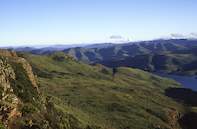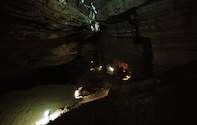Gateway to the Panorama Route
Ohrigstad is a small town situated on the north of Lydenburg in the Limpopo province, South Africa. The town lies in the Lowveld region and teems with an abundance of rich flora and fauna.

There is plenty to do around Ohrigstad for visitors, as it lies near some of South Africa’s biggest natural attractions and wonders. Ohrigstad is also known as the gateway to the Panorama Route.
Ohrigstad is great location for relaxing and spending time outdoors. The town is located near popular tourist attractions such as God’s Window, the Blyde River Canyon, and Bourke's Luck Potholes. Ohrigstad has plenty of accommodation options from regular B&Bs, overnight camping to lodges.
The popular Ohrigstad Dam Nature Reserve is a great way to spend a day or a weekend in the South African Lowveld. Visitors can take part in birding, game viewing, fishing, boating and picnicking. There are numerous hiking and biking trails to enjoy in Ohrigstad and many other nearby reserves to discover.
Ohrigstad lies along the Mpumalanga Escarpment that looks down into a valley where you can watch kudu come to drink at dawn or dusk. It's a real nature lover's hideaway in the hills, teeming with indigenous plants, a confetti show of birds, as well as other wildlife.
Ohrigstad is a fantastic spot to unwind and enjoy nature at a slower pace and makes a great holiday destination for the whole family and outdoor lovers.
Ohrigstad Echo Caves

The Singing Stones Cave system gets its name from a stalactite which, when beaten like a drum, makes a sound that echoes loud enough to be heard outside the cave for a surprising distance. There is a legend that local people used it as a warning signal. If so, it would be one of the mythological 'singing stones' that have all but disappeared from modern knowledge (more on this fascinating subject can be found in Lyall Watson's amazing book Lighting Bird).
Its first known discovery, in 1923, was by a farmer who was looking for lost cattle, possibly a relative of Oom Schalk Lourens, another famous seeker of cattle from Groot Marico. As with most large caves in the area, the Echo Caves are located in a dolomitic horizon behind the very hard Black Reef Quartzite layer that forms the hard edge of the Limpopo Escarpment.
The Echo Cave system, near Abel Erasmus Pass, is about 2 km long and the biggest chamber is about 60 m high. Archaeological finds indicate a trading culture with people from outside Southern Africa, much like that of Mapungubwe.